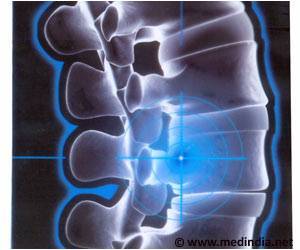Finding where the pain is can be extremely difficult in children who can't express themselves, scientists in this study are stressing the importance of new studies in this area.

‘The researchers are emphasizing the need for further studies of pain symptoms, evaluation, and diagnosis in children with complex medical conditions such as cerebral palsy ’





The two-year study examined the symptoms, diagnostic testing, and nursing assessment of pain in children who have profound intellectual and developmental disability and are completely dependent on caregivers or medical devices (such as feeding tubes) for their care. The study included 46 patients seen at a children's hospital Complex Care Service with a chief concern of pain. The patients ranged from infants to young adults; the average age was 13 years. Most had several chronic conditions, most commonly seizure disorders and cerebral palsy; all were unable to verbally communicate their pain - where they were hurting, how much pain they were experiencing, or whether they were in pain at all.
The most common symptoms prompting parents or caregivers to seek medical care for their child were abdominal pain or distention (bloating), irritability, or other signs of pain. In some cases, the parents said that their child was just "not acting like herself [or himself]." The patients underwent an average of five diagnostic tests, most commonly X-rays; and were evaluated by an average of four specialty services while in the hospital.
The most common diagnoses were infections, including urinary tract infections (30 percent of children); constipation (20 percent); and increased seizure activity related to low levels of antiepileptic medications (13 percent). After other conditions were ruled out, a diagnosis of chronic pain was made in 22 percent of patients. Across diagnostic groups, symptoms were similar, including irritability, feeding intolerance, mental status changes, and vomiting.
While in the hospital, the children underwent more than 3,300 pain assessments - an average of seven assessments per patient per day. Since the children couldn't communicate their pain, the nurses used a number of assessment tools based on observable pain behaviors (facial expressions, crying, etc).
Advertisement
- Eliciting the parents' or caregivers' knowledge of the child. As in previous studies, the results suggest that parents are often able to identify behavior changes suggesting that their children are in pain.
- Assessing the presence of pain, even when the child appears to be sleeping or when there are indications of a change in mental status.
- Using pain assessment tools matched to the patient's cognitive abilities, incorporating behavior assessments and input from parents.
- Being alert for potentially life-threatening sources of pain - while also not overlooking more common problems like infections or constipation.
Source-Eurekalert










